-
 Bitcoin
Bitcoin $105,564.0464
0.23% -
 Ethereum
Ethereum $2,532.7861
-0.95% -
 Tether USDt
Tether USDt $1.0005
0.00% -
 XRP
XRP $2.1504
-0.10% -
 BNB
BNB $647.9477
-0.64% -
 Solana
Solana $145.7444
-0.88% -
 USDC
USDC $0.9999
0.01% -
 Dogecoin
Dogecoin $0.1778
-0.04% -
 TRON
TRON $0.2718
0.14% -
 Cardano
Cardano $0.6284
-1.25% -
 Hyperliquid
Hyperliquid $40.5452
-3.15% -
 Sui
Sui $2.9851
-1.60% -
 Chainlink
Chainlink $13.2472
-0.45% -
 Bitcoin Cash
Bitcoin Cash $437.5258
-1.68% -
 UNUS SED LEO
UNUS SED LEO $9.1153
0.92% -
 Stellar
Stellar $0.2577
-0.77% -
 Avalanche
Avalanche $18.9603
-1.59% -
 Toncoin
Toncoin $2.9625
-1.72% -
 Shiba Inu
Shiba Inu $0.0...01211
-0.08% -
 Litecoin
Litecoin $85.7512
-0.61% -
 Hedera
Hedera $0.1540
-2.92% -
 Polkadot
Polkadot $3.7877
-0.71% -
 Ethena USDe
Ethena USDe $1.0004
-0.01% -
 Monero
Monero $314.6226
1.31% -
 Dai
Dai $1.0000
0.00% -
 Bitget Token
Bitget Token $4.5216
-0.55% -
 Pepe
Pepe $0.0...01105
-1.09% -
 Uniswap
Uniswap $7.3637
-2.47% -
 Pi
Pi $0.6184
6.26% -
 Aave
Aave $275.1479
-4.78%
What does the SAR indicator turn red mean? What trend change does turning green indicate?
When the SAR indicator turns red, it signals a shift from bullish to bearish, suggesting traders exit long positions or enter shorts in cryptocurrency trading.
Jun 13, 2025 at 09:28 am
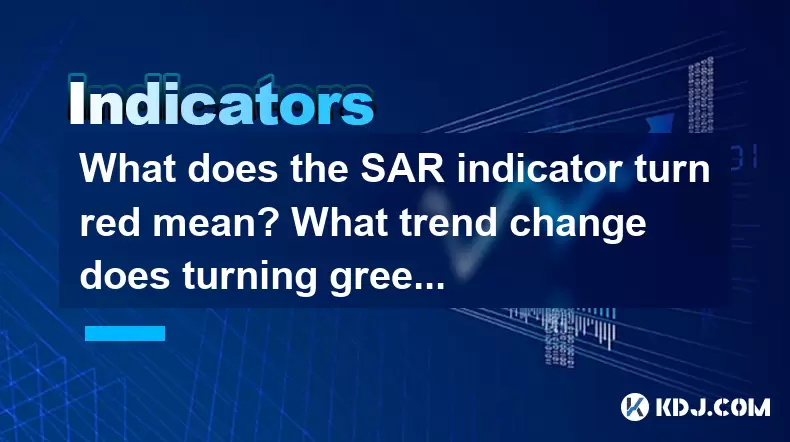
The SAR (Stop and Reverse) indicator is a popular tool used by traders within the cryptocurrency market to determine potential reversals in price trends. When the SAR indicator turns red or green, it signals specific changes in market trends that can be crucial for making trading decisions. This article will explore the meanings behind these color changes and how they can be interpreted in the context of cryptocurrency trading.
Understanding the SAR Indicator
The SAR indicator, developed by J. Welles Wilder, is designed to provide entry and exit points for trades. It appears on charts as a series of dots, either above or below the price candles. The position of these dots relative to the price action helps traders identify potential reversals in the trend. The color of the dots, typically red and green, is used to enhance the visual interpretation of these signals.
What Does the SAR Indicator Turning Red Mean?
When the SAR indicator turns red, it signifies that the trend is shifting from bullish to bearish. This means that the price is expected to start declining, and it is a signal for traders to consider exiting long positions or entering short positions. The red dots will appear above the price candles, indicating that the price is now under pressure and likely to move downwards.
For example, if you are trading Bitcoin and notice that the SAR indicator has turned red, it suggests that Bitcoin's price may be about to enter a downtrend. This could be an opportunity to sell your Bitcoin holdings or to short sell, anticipating further price drops.
What Trend Change Does Turning Green Indicate?
Conversely, when the SAR indicator turns green, it indicates a shift from a bearish to a bullish trend. The green dots will appear below the price candles, signaling that the price is expected to rise. This is a cue for traders to consider entering long positions or exiting short positions.
For instance, if you are monitoring Ethereum and the SAR indicator turns green, it suggests that Ethereum's price may be entering an uptrend. This could be a signal to buy Ethereum or to close any short positions you might have, expecting the price to increase.
Practical Application in Cryptocurrency Trading
To effectively use the SAR indicator in cryptocurrency trading, it's important to understand how to apply it in real-time trading scenarios. Here's how you can integrate the SAR indicator into your trading strategy:
- Identify the Trend: Start by observing the current position of the SAR dots relative to the price candles. If the dots are below the candles and green, the trend is bullish. If the dots are above the candles and red, the trend is bearish.
- Look for Reversals: Pay close attention to the moment when the SAR indicator changes color. A shift from green to red suggests a potential bearish reversal, while a shift from red to green indicates a potential bullish reversal.
- Confirm with Other Indicators: While the SAR indicator is useful, it's advisable to confirm its signals with other technical indicators, such as the Moving Average Convergence Divergence (MACD) or the Relative Strength Index (RSI). This can help reduce false signals and increase the reliability of your trading decisions.
- Set Stop-Loss and Take-Profit Levels: Once you enter a trade based on the SAR indicator, set appropriate stop-loss and take-profit levels to manage your risk. The SAR dots can also serve as dynamic stop-loss levels, moving as the price changes.
Examples of SAR Indicator in Action
To illustrate how the SAR indicator works in the cryptocurrency market, let's consider two hypothetical scenarios:
Scenario 1: Bitcoin Trading
Imagine you are trading Bitcoin, and the SAR indicator has been green for several weeks, with the dots positioned below the price candles. Suddenly, the indicator turns red, and the dots move above the price candles. This signals a potential shift from a bullish to a bearish trend. As a trader, you might decide to sell your Bitcoin holdings or enter a short position, anticipating a price decline.Scenario 2: Ethereum Trading
Now, suppose you are trading Ethereum, and the SAR indicator has been red for a while, with the dots above the price candles. The indicator then turns green, and the dots move below the price candles. This indicates a potential shift from a bearish to a bullish trend. You might choose to buy Ethereum or close any short positions, expecting the price to rise.
Common Mistakes to Avoid
When using the SAR indicator in cryptocurrency trading, it's important to be aware of common pitfalls that can lead to poor trading decisions:
- Over-reliance on the Indicator: While the SAR indicator can be a valuable tool, relying solely on it without considering other market factors can lead to false signals. Always use it in conjunction with other indicators and market analysis.
- Ignoring Market Context: The effectiveness of the SAR indicator can vary depending on market conditions. In highly volatile markets, the indicator may produce more false signals. It's crucial to understand the broader market context before making trading decisions.
- Not Adjusting the Settings: The default settings of the SAR indicator may not be suitable for all trading scenarios. Experiment with different settings to find what works best for your trading style and the specific cryptocurrency you are trading.
Frequently Asked Questions
Q: Can the SAR indicator be used for all cryptocurrencies?
A: Yes, the SAR indicator can be applied to any cryptocurrency. However, its effectiveness may vary depending on the volatility and trading volume of the specific cryptocurrency. It's important to test the indicator with different cryptocurrencies to understand its performance in various market conditions.
Q: How often should I check the SAR indicator for signals?
A: The frequency of checking the SAR indicator depends on your trading style. For day traders, checking the indicator multiple times a day may be necessary. For swing traders, checking it daily or weekly might be sufficient. It's important to align the frequency of checks with your trading strategy and time frame.
Q: Can the SAR indicator be used in combination with other technical analysis tools?
A: Absolutely. The SAR indicator is often used in conjunction with other technical analysis tools to confirm signals and enhance trading decisions. Common tools to use with the SAR indicator include the Moving Average, MACD, and RSI. Combining these tools can help increase the accuracy of your trading signals.
Q: Is the SAR indicator suitable for beginners?
A: The SAR indicator can be a useful tool for beginners, but it requires a basic understanding of technical analysis and market trends. Beginners should start by familiarizing themselves with the indicator in a demo trading environment before applying it to live trading. Additionally, combining the SAR indicator with educational resources and other simple tools can help beginners build confidence and improve their trading skills.
Disclaimer:info@kdj.com
The information provided is not trading advice. kdj.com does not assume any responsibility for any investments made based on the information provided in this article. Cryptocurrencies are highly volatile and it is highly recommended that you invest with caution after thorough research!
If you believe that the content used on this website infringes your copyright, please contact us immediately (info@kdj.com) and we will delete it promptly.
- PayPal's PYUSD Stablecoin Investigated by the SEC, But No Enforcement Action Is Being Sought
- 2025-06-15 11:25:12
- Turbo (TURBO) Price Prediction 2025-2030: Can Turbo Rocket Upwards Once Again and Deliver a New All-Time High?
- 2025-06-15 11:25:12
- Eric Trump Says Banks Will Need to Utilize Blockchain Technology if They Want to Survive the Next Decade
- 2025-06-15 11:20:12
- Cardano [ADA] Surpasses Ethereum [ETH] in Developer Activity, Signaling a Potential Shift in the Competitive Landscape of Blockchain Platforms.
- 2025-06-15 11:20:12
- The Intersection of Artificial Intelligence and Crypto Is Heating Up, and May 2025 Is Shaping Up to Be a Pivotal Month for Some of the Sector's Most Promising Tokens
- 2025-06-15 11:15:11
- Bybit Launches 1V1 Trading Arena, Gamifying Trading Experience for Crypto Pros and Beginners
- 2025-06-15 11:15:11
Related knowledge
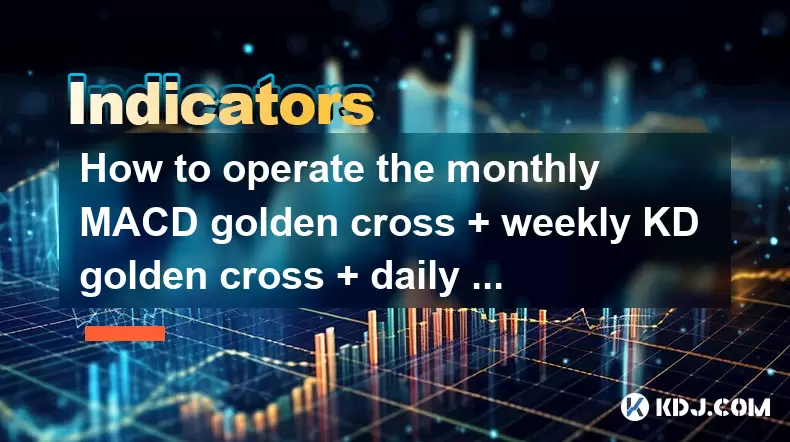
How to operate the monthly MACD golden cross + weekly KD golden cross + daily volume breakthrough?
Jun 15,2025 at 05:36am
Understanding the Strategy: Monthly MACD Golden CrossTo effectively operate the monthly MACD golden cross, traders must first understand what this signal entails. The MACD (Moving Average Convergence Divergence) golden cross occurs when the MACD line crosses above the signal line on a given chart timeframe. When this happens on the monthly chart, it sug...
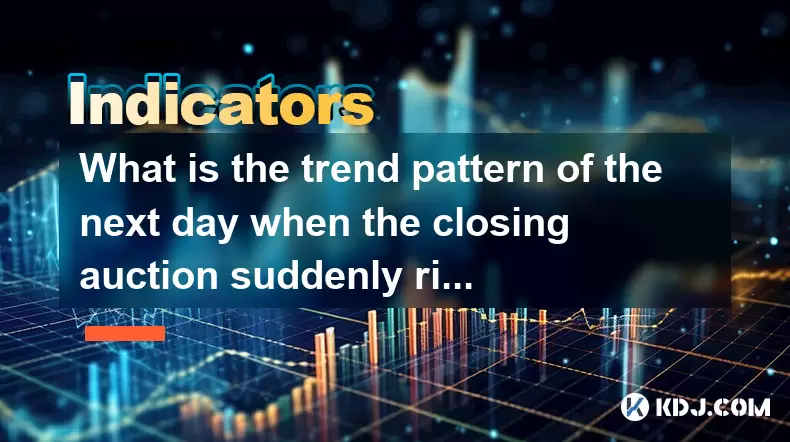
What is the trend pattern of the next day when the closing auction suddenly rises?
Jun 15,2025 at 08:15am
Understanding Closing Auctions in Cryptocurrency MarketsIn the context of cryptocurrency trading, a closing auction refers to a mechanism used by exchanges to determine the closing price of an asset at the end of a trading session. This process typically occurs within a short time window before the market closes for the day and aims to provide a fair an...

What does it mean when the volume fluctuates during the sideways trading at high levels?
Jun 15,2025 at 10:28am
Understanding Volume Fluctuations in Sideways TradingWhen volume fluctuates during sideways trading at high levels, it refers to the changes in the number of assets traded over a given period while the price remains relatively stable, moving within a defined range. This phenomenon typically occurs when the market lacks a clear directional bias—neither b...
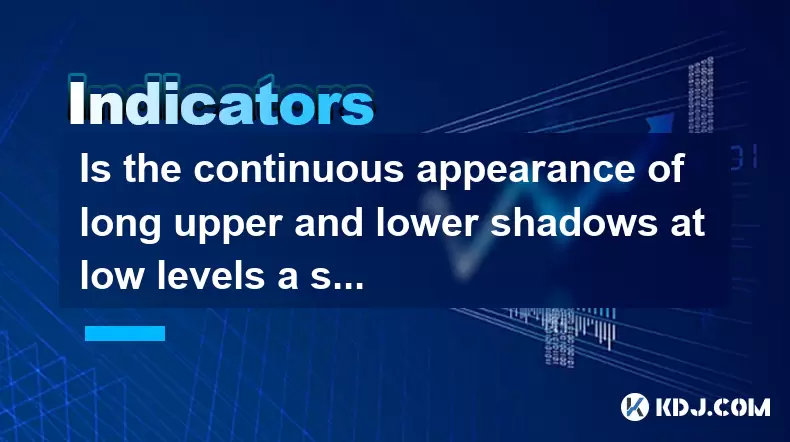
Is the continuous appearance of long upper and lower shadows at low levels a signal of accumulation?
Jun 15,2025 at 01:43am
Understanding Long Upper and Lower Shadows in Candlestick ChartsIn the world of cryptocurrency trading, candlestick patterns are widely used to analyze price movements. A long upper shadow, also known as a wick or tail, indicates that the price rose significantly during the period but was pushed back down by selling pressure. Conversely, a long lower sh...
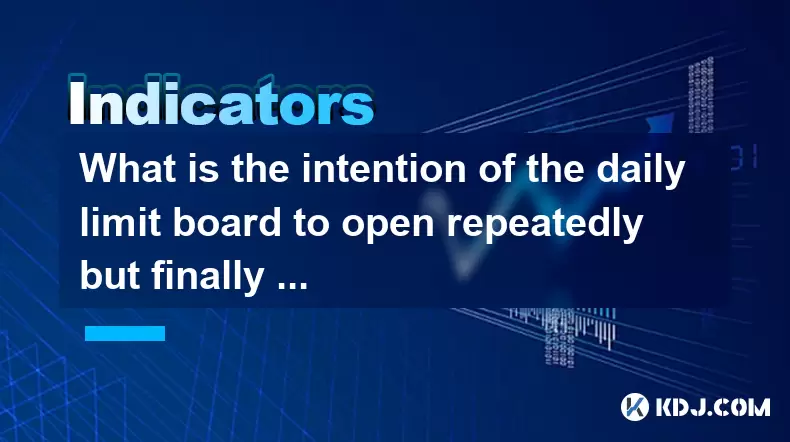
What is the intention of the daily limit board to open repeatedly but finally close?
Jun 15,2025 at 01:08am
Understanding the Daily Limit Board in Cryptocurrency TradingIn cryptocurrency trading, a daily limit board refers to a price movement restriction mechanism applied by certain exchanges or regulatory bodies. This mechanism is primarily used to prevent extreme volatility and panic selling or buying during periods of intense market fluctuation. When an as...

How to calculate the probability of trend continuation after the MACD column divergence?
Jun 14,2025 at 08:01am
Understanding MACD Column DivergenceThe Moving Average Convergence Divergence (MACD) is a widely used technical indicator in cryptocurrency trading. The MACD column, also known as the histogram, represents the difference between the MACD line and the signal line. When price makes a new high or low but the MACD histogram does not confirm this movement, a...

How to operate the monthly MACD golden cross + weekly KD golden cross + daily volume breakthrough?
Jun 15,2025 at 05:36am
Understanding the Strategy: Monthly MACD Golden CrossTo effectively operate the monthly MACD golden cross, traders must first understand what this signal entails. The MACD (Moving Average Convergence Divergence) golden cross occurs when the MACD line crosses above the signal line on a given chart timeframe. When this happens on the monthly chart, it sug...

What is the trend pattern of the next day when the closing auction suddenly rises?
Jun 15,2025 at 08:15am
Understanding Closing Auctions in Cryptocurrency MarketsIn the context of cryptocurrency trading, a closing auction refers to a mechanism used by exchanges to determine the closing price of an asset at the end of a trading session. This process typically occurs within a short time window before the market closes for the day and aims to provide a fair an...

What does it mean when the volume fluctuates during the sideways trading at high levels?
Jun 15,2025 at 10:28am
Understanding Volume Fluctuations in Sideways TradingWhen volume fluctuates during sideways trading at high levels, it refers to the changes in the number of assets traded over a given period while the price remains relatively stable, moving within a defined range. This phenomenon typically occurs when the market lacks a clear directional bias—neither b...

Is the continuous appearance of long upper and lower shadows at low levels a signal of accumulation?
Jun 15,2025 at 01:43am
Understanding Long Upper and Lower Shadows in Candlestick ChartsIn the world of cryptocurrency trading, candlestick patterns are widely used to analyze price movements. A long upper shadow, also known as a wick or tail, indicates that the price rose significantly during the period but was pushed back down by selling pressure. Conversely, a long lower sh...

What is the intention of the daily limit board to open repeatedly but finally close?
Jun 15,2025 at 01:08am
Understanding the Daily Limit Board in Cryptocurrency TradingIn cryptocurrency trading, a daily limit board refers to a price movement restriction mechanism applied by certain exchanges or regulatory bodies. This mechanism is primarily used to prevent extreme volatility and panic selling or buying during periods of intense market fluctuation. When an as...

How to calculate the probability of trend continuation after the MACD column divergence?
Jun 14,2025 at 08:01am
Understanding MACD Column DivergenceThe Moving Average Convergence Divergence (MACD) is a widely used technical indicator in cryptocurrency trading. The MACD column, also known as the histogram, represents the difference between the MACD line and the signal line. When price makes a new high or low but the MACD histogram does not confirm this movement, a...
See all articles

























































































